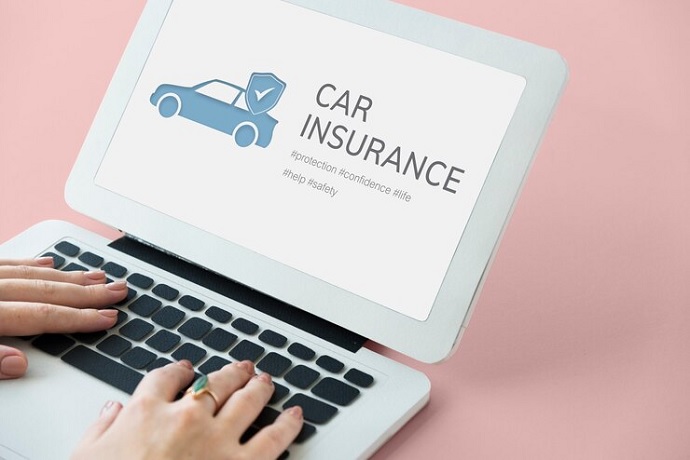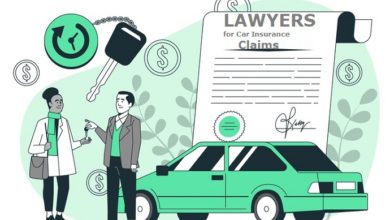
Auto insurance is a necessary expense for anyone who owns a car, but that doesn’t mean you have to break the bank to keep your vehicle covered. With a little effort and some savvy decision-making, you can lower your auto insurance premiums without sacrificing the quality of coverage. In this blog post, we will discuss what is auto insurance & how it works, explore several tips and strategies to help you reduce your auto insurance costs while still maintaining the protection you need on the road.
What is Auto Insurance & How It Works?
Auto insurance, also known as car insurance or motor insurance (see also Motorcycle Accident Lawyer to know more about auto insurance), is a contract between an individual or entity and an insurance company that provides financial protection against losses or damages related to a motor vehicle. Auto insurance is designed to help cover the costs associated with accidents, theft, and other unforeseen events involving vehicles. It is a legal requirement in most countries, including the United States, where drivers are typically mandated to carry a minimum level of auto insurance coverage.
Key Components of Auto Insurance
Liability Coverage
This is the most fundamental aspect of auto insurance and covers bodily injury and property damage you may cause to others in an accident for which you are at fault. It includes medical expenses and property repair or replacement costs for the other party.
Collision Coverage
Collision coverage pays for repairs or replacement of your vehicle if it’s damaged in a collision, regardless of fault. This coverage is especially important for newer or more valuable vehicles.
Comprehensive Coverage
This covers damage to your vehicle caused by events other than collisions, such as theft, vandalism, fire, natural disasters, or hitting an animal. Comprehensive coverage is often required if you have a car loan or lease.
Uninsured/Underinsured Motorist Coverage
This protects you if you are involved in an accident with a driver who either has no insurance or insufficient coverage to pay for your damages and injuries.
Personal Injury Protection (PIP) or Medical Payments Coverage
PIP or MedPay covers medical expenses for you and your passengers, regardless of fault, in case of injury sustained in an accident.
Optional Coverage
Depending on your needs, you can opt for additional coverage such as rental car reimbursement, roadside assistance, and gap insurance (which covers the difference between the value of your car and the amount you owe on a car loan or lease).
Auto insurance premiums, or the amount you pay for coverage, are determined by various factors, including your driving history, age, gender, location, the type of vehicle you drive, and the coverage options you choose. Drivers with a history of accidents or traffic violations typically pay higher premiums, while safe drivers can qualify for discounts.
Auto insurance is essential not only to protect yourself and your assets but also to ensure that you comply with legal requirements. The specific laws and requirements for auto insurance coverage vary by country and even by state or region within a country, so it’s important to understand the regulations in your area and purchase coverage that meets or exceeds those requirements.
Also read when to hire an insurance attorney for more information about legal requirements.
Disadvantages of Auto Insurance
Auto insurance has several disadvantages to consider, including;
- the cost of premiums, potential increases after claims, coverage limitations, deductibles, policy exclusions, and complex terms
- claims process can be time-consuming, and there’s a risk of claim denials. Insurance companies can also cancel policies, and credit scores may affect premiums
- depending too much on insurance can lead to complacency in safe driving habits
Important: Careful policy selection, understanding terms, and maintaining safe practices can help mitigate these disadvantages.
Shop Around Auto Insurance Premiums
One of the most effective ways to lower your auto insurance premiums is to shop around for the best rates. Different insurance companies offer varying rates and discounts, so it’s essential to compare quotes from multiple providers. Online comparison tools make this process easy, allowing you to input your information and receive quotes from various insurers. Be sure to consider not only the cost but also the coverage options and customer service reputation of each company.
When shopping around for auto insurance, keep in mind that the lowest premium may not always be the best choice. In addition to cost, consider factors like the level of coverage provided and the insurer’s reputation for customer service. Read reviews, ask for recommendations from friends and family, and research the financial stability of the insurance companies you’re considering.
Key Points
- Your goal is not only to find affordable coverage but also to ensure that you’ll receive the support you need in the event of an accident or claim.
- Take the time to thoroughly compare policies, and don’t hesitate to reach out to insurance agents or representatives with any questions or concerns you may have.
- The effort you put into shopping around can pay off with both savings and peace of mind.
Bundle Your Policies When Buying Car Insurance Premiums

Many insurance companies offer discounts to customers who bundle multiple policies, such as auto and home insurance, with the same provider. Bundling can lead to significant savings, so inquire about this option when shopping for insurance. It’s a win-win situation: you’ll lower your auto insurance premiums and simplify your insurance management.
10 Ways in Bundling Auto Insurance
Bundling auto insurance policies involves combining multiple insurance policies, such as auto and home insurance, with the same insurance provider to receive discounts and streamline your coverage management. Here are the steps to bundle auto insurance policies:
Choose the Right Insurance Provider
Start by researching insurance companies that offer multiple types of insurance, such as auto, home, renters, or life insurance. Look for providers that have a strong reputation for customer service, competitive rates, and the coverage you need.
Assess Your Insurance Needs
Determine which insurance policies you want to bundle. Common choices include auto and home insurance, but you can bundle other types of coverage as well, depending on your needs and the insurance provider’s offerings.
Contact Your Insurance Provider
Reach out to your current auto insurance provider and inquire about bundling options. Ask about the available discounts and how much you can save by bundling policies.
Request Quotes for Auto Insurance Premiums Costs
Even if you already have one policy with the provider, request quotes for the additional policy you want to bundle. This allows you to compare the bundled rate with the cost of keeping the policies separate.
Review Coverage and Terms
Carefully review the coverage options and terms of the bundled policies. Ensure that the combined coverage meets your needs and that you fully understand the terms and conditions.
Evaluate the Savings
Compare the cost of bundling your policies with the total cost of keeping them separate. Bundling should result in cost savings; otherwise, it may not be worthwhile.
Make Any Necessary Adjustments
If you’re satisfied with the bundled policies and the cost savings, work with your insurance agent to make the necessary adjustments to your coverage. This may involve modifying your existing auto insurance policy or creating a new one for your bundled coverage.
Consolidate Your Billing
With bundled policies, you’ll typically receive a single bill for all your coverage. Make sure you understand the billing schedule and payment options.
Monitor Your Coverage
Regularly review your bundled policies to ensure they continue to meet your needs. Life changes, such as moving to a new home or purchasing a new vehicle, may necessitate adjustments to your coverage.
Seek Discounts Over Time
As you maintain bundled policies and build a relationship with your insurance provider, inquire about additional discounts that may become available to you. Loyalty discounts and safe driving incentives can further reduce your insurance costs.
Bundling your auto insurance policies can offer convenience and cost savings, but it’s essential to periodically review your coverage and shop around to ensure you’re getting the best deal. Don’t compromise on coverage quality for the sake of bundling; always prioritize having adequate insurance protection.
Maintain a Good Driving Record

Your driving history has a substantial impact on your insurance premiums. Insurance companies reward safe drivers with lower rates, so avoid accidents and traffic violations. If you’ve had incidents in the past, focus on improving your driving habits, as a clean record over time can lead to reduced premiums.
Ways to Maintain a Good Driving Record
Maintaining a clean driving record is essential for both safety and financial reasons.
- Follow traffic laws, avoid distractions, never drive under the influence, and maintain a safe following distance.
- Practice defensive driving, be cautious in adverse conditions, and keep your vehicle well-maintained.
- Stay informed about traffic laws, be mindful of your speed, and promptly address any traffic violations to prevent points from accumulating on your record.
- Safe driving not only keeps you and others on the road safe but also helps keep your insurance premiums low.
Increase Your Deductible
Your deductible is the amount you’re responsible for paying before your insurance coverage kicks in. By opting for a higher deductible, you can lower your monthly premiums. Just be sure to have enough savings set aside to cover the deductible in case of an accident.
How to Increase Car Insurance Deductibles?
Increasing the deductible on your auto insurance can be a way to lower your insurance premiums. However, it’s essential to carefully consider the potential financial impact before making this decision. Here are the steps to increase deductibles in your auto insurance:
Review Your Current Policy
Obtain a copy of your current auto insurance policy, which includes details about your existing deductible. The deductible is the amount you must pay out of pocket before your insurance coverage kicks in.
Understand Your Financial Situation
Consider your financial stability and ability to cover a higher deductible in the event of an accident or claim. Ensure that you have sufficient savings to cover the increased deductible comfortably.
Contact Your Insurance Provider
Reach out to your insurance company or agent to discuss your intention to increase your deductible. They can provide information on the available options and how it will affect your policy.
Evaluate the Cost Savings
Request quotes for your auto insurance policy with different deductible amounts to see how they impact your premiums. Typically, the higher the deductible, the lower your monthly or annual premiums will be.
Assess Risk Tolerance
Consider your risk tolerance. A higher deductible means you’ll pay more out of pocket if you have a claim, so think about how comfortable you are with that risk.
Weigh the Savings Against Potential Costs
Calculate the potential savings from increasing your deductible over time and compare them to the additional amount you’d need to cover in case of an accident. It’s essential to strike a balance between cost savings and financial security.
Make an Informed Decision
Based on your evaluation of the cost savings, your financial situation, and your risk tolerance, decide on an appropriate deductible amount. Common deductible options include $500, $1,000, or even higher amounts.
Make the Change
Instruct your insurance provider to update your policy with the new deductible amount. This can usually be done easily through a phone call or email.
Set Aside Emergency Funds
Once you’ve increased your deductible, consider setting aside an emergency fund to cover it if needed. Having this money readily available can provide peace of mind.
Monitor Your Policy
Continue to review your auto insurance policy periodically to ensure it meets your changing needs. If your financial situation improves or you become less comfortable with the higher deductible, you can adjust it accordingly.
Increasing your auto insurance deductible can be a practical way to save on premiums, but it’s crucial to do so while carefully considering your financial situation and risk tolerance. Make an informed decision that aligns with your ability to cover the deductible in case of an accident or claim.
Drive Less
The fewer miles you drive, the lower your risk of being involved in an accident. Many insurers offer discounts for low-mileage drivers, so consider using public transportation, carpooling, or telecommuting if possible. You may also want to explore usage-based insurance programs that track your driving habits and offer discounts based on safe driving practices.
Maintain a Good Credit Score
Insurance companies often use your credit score as a factor when determining your premiums. A higher credit score can lead to lower insurance rates, so work on improving your credit if it’s not in great shape.
Ways to Maintain a Good Credit Score
Maintaining a good credit score is vital for your financial health. To achieve this,
- Consistently pay bills on time, keep credit card balances low, and avoid opening too many new accounts.
- Having a mix of credit types and keeping older accounts open can also positively impact your score.
- Regularly review your credit reports for errors and be cautious about closing accounts, as this can affect your credit utilization ratio.
- In cases of financial difficulties, work out payment plans to prevent collections or charge-offs.
- Use credit responsibly, protect your personal information, and seek professional help if needed.
- Building and maintaining good credit takes time and diligence, but it’s essential for securing favorable loans and financial opportunities.
Choose the Right Vehicle to Reduce Auto Insurance Premiums

The type of vehicle you drive can significantly impact your insurance premiums. Generally, smaller, less expensive cars are cheaper to insure than larger, more expensive ones. Safety features and anti-theft devices can lead to discounts. Before purchasing a new vehicle, consider how it will affect your insurance costs.
Choosing the right vehicle can significantly impact your auto insurance premium costs. Insurance companies consider various factors when determining rates, and the type of vehicle you drive is one of them. Here are some tips on how to choose a vehicle that can help reduce your auto insurance premiums:
Safety Features
Vehicles equipped with advanced safety features like airbags, anti-lock brakes, traction control, and electronic stability control tend to receive lower insurance premiums. Look for cars with these safety features to reduce your rates.
Vehicle Size and Type
Smaller, less powerful vehicles are generally cheaper to insure than larger, more powerful ones. Sedans and minivans often have lower premiums compared to SUVs or sports cars. Consider the vehicle’s size and type to lower your costs.
Avoid High-Theft Models
Some vehicles are more prone to theft than others. Check the Insurance Institute for Highway Safety’s (IIHS) list of vehicles with high theft rates and avoid them if possible.
Purchase a Vehicle with a Good Safety Record
Vehicles with a strong safety record and low accident rates typically have lower insurance premiums. Research crash test ratings and safety statistics for the models you’re considering.
Consider the Cost of Repairs
Insurance premiums may be influenced by the cost of repairing or replacing your vehicle. Choose a car with readily available and affordable parts to reduce insurance costs.
Age of the Vehicle
Older vehicles often have lower premiums compared to brand new ones. Consider a used or certified pre-owned car to save on both the purchase price and insurance premiums.
Avoid High-Performance or Luxury Car
Sports cars and luxury vehicles typically come with higher insurance costs due to the expense of repairs and their potential for high-speed accidents. Opt for more modestly priced vehicles for lower premiums.
Research Insurance Costs Before Buying
Before making a purchase, obtain insurance quotes for the specific make and model you’re considering. This can help you make an informed decision based on the expected insurance costs.
Inquire About Safety Discounts
Some insurance companies offer discounts for vehicles equipped with specific safety features, such as anti-theft devices, lane departure warning, and automatic emergency braking. Ask your insurer about available safety-related discounts.
Choosing the right vehicle can lower your insurance premiums, other factors like your driving record, location, and coverage options also affect your rates.
Review and Adjust Coverage
Regularly review your insurance coverage to ensure it aligns with your current needs. If your vehicle is older and has depreciated in value, you may be able to reduce your coverage levels, which can lead to lower premiums. However, be cautious not to underinsure yourself.
Regularly reviewing and adjusting your car insurance coverage is crucial to ensure that your policy aligns with your changing life circumstances and financial needs. It enables you to optimize your coverage, taking into account factors such as vehicle value, mileage changes, additions or modifications, and shifting liability limits. Staying informed about discounts, new coverage options, and market changes can help you save money and improve your protection. This practice provides peace of mind, knowing that you have the right level of insurance tailored to your current situation and budget.
Ask About Discounts for Auto Insurance Premiums

Insurance companies offer various discounts, so don’t hesitate to ask about them. Common discounts include safe driver discounts, good student discounts, and discounts for military personnel or seniors. Some insurers offer discounts for completing defensive driving courses, bundling multiple policies (such as auto and home insurance), or using anti-theft devices in your vehicle.
It’s essential to proactively inquire about these discounts, as they can significantly reduce your insurance premiums, ultimately helping you save money while maintaining adequate coverage. By exploring and utilizing all available discounts, you can optimize your insurance policy for affordability without compromising on protection.
Consider Usage-Based Insurance
Usage-based insurance programs, like telematics, track your driving behavior and adjust your premiums accordingly. If you’re a safe driver, these programs can lead to substantial savings. Telematics devices or mobile apps can monitor factors such as your speed, acceleration, braking habits, and even the time of day you drive. By demonstrating responsible driving behavior, you can earn discounts on your premiums.
These programs not only incentivize safe driving but also provide you with valuable insights into your habits behind the wheel, which can help you further improve your skills and reduce the risk of accidents. Be sure to inquire about such options with your insurer and explore how telematics-based insurance can benefit both your wallet and your driving habits.
Summary
Lowering your auto insurance premiums doesn’t have to be a complicated or time-consuming process. By implementing these tips and staying informed about your options, you can effectively reduce your insurance costs while still maintaining the protection you need on the road. It’s essential to strike a balance between cost savings and adequate coverage to ensure you’re adequately protected in case of an accident.








